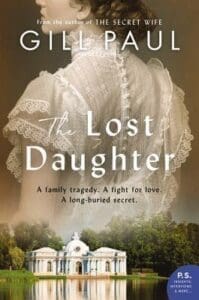The Furnace Girl: The Mysterious case of Elfrieda Knaak by Kraig W. Moreland and Toby Jones– 433 pages
Book Blurb:
On October 29,1928, in the quaint Chicago suburb of Lake Bluff, 30-year-old Elfrieda Knaak was found naked, with burns over more than half of her body, and propped up next to a furnace in the basement of the Village Hall. The events that took place in the following two weeks turned the idyllic village of Lake Bluff upside down as local and county law enforcement officials scrambled to determine what took place and who was responsible.
Ninety years later, the questions are still unanswered– How did she get there? By what means was she so badly burned? Who could have perpetrated such a heinous crime? This baffling story became a nation-wide media sensation, thrusting the small town of Lake Bluff and its beloved Village Hall onto the front pages of newspapers from New York to Los Angeles.
The Furnace Girl is Kraig Moreland’s theory of what really happened to Elfrieda Knaak, as told to and beautifully written by Toby Jones, It is a stranger-than-fiction story, told through the eyes of Griff Morgan, a young orphan boy, whose harrowing journey makes him an accidental witness to what still remains one of the most puzzling, unsolved crimes of the early 1900s.
In this fictionalized account of the mystery, Griff and his young sister land at the Lake Bluff Orphanage, where they must learn to navigate their new surroundings and face their fears. The 12-year-old Griff stumbles upon unlawful activity throughout the town, from Elfrieda’s illicit relationship with a married man, (and prime suspect) to characters so dark that he feels his safety slipping away with every day.
My Review: 4 stars
The Furnace Girl is an unsolved true crime mystery that took place in a North Shore suburb of Chicago. The storyteller, Kraig Moreland, worked hand in hand with the author and friend, Toby Smith. Through phone calls to Toby, Kraig shared his imagined version of events, based on years of research, that led up to Elfrieda Knaak’s murder. Interesting way to write a book, but nonetheless, they made it work.
Elfrieda’s murder is one that will baffle historians and sleuths alike, and the research is confounding. It seems poor police work, the mob’s hand in many pockets and no real proof will keep this mystery open for all time. It’s amazing how many people who live in or near to Lake Bluff, Illinois, that were not aware of this historical case until the book was written.
Woven through the story is the history of the Lake Bluff Orphanage, a long-standing institution in downtown Lake Bluff. This was the epitome of a what an orphanage should be; it valued kindness, education and an environment fueled by encouragement. Moreland grew up in Lake Bluff and remembers the boys and girls who lived in the orphanage. All the kids, both the from the orphanage and those that weren’t, played and went to school together. One of the kids, as an adult, narrated the story so we saw life in the orphanage and simultaneously learned about the real-life characters. In my opinion, I think the story would have worked even better as a historical fiction novel with an omniscient point of view. Some of the “goings-on” behind the scenes could have been extrapolated and it could’ve allowed for more supposition.
Moreland came to my Book Chat Live and this proved to be a discussion worthy book. An elderly gentleman, who was a real-life character featured in the book, attended the event. We were also surprised when a woman who’d been reading this book for her book club shared it with her husband because he’d been adopted out of the Lake Bluff Orphanage. She had no idea what the book was about, but they both attended and Kraig is now helping this gentleman find his birthmother.
Fans of local lore and unsolved mysteries will enjoy this book.

















